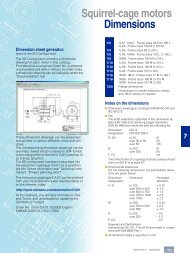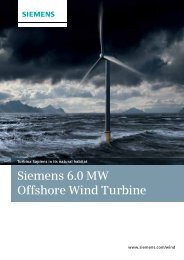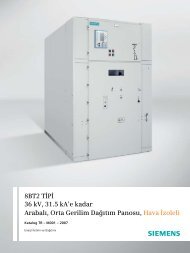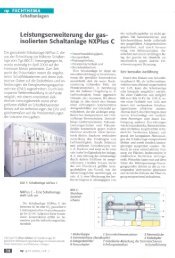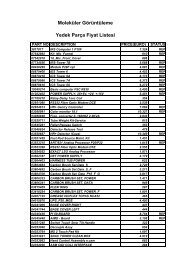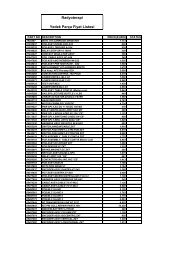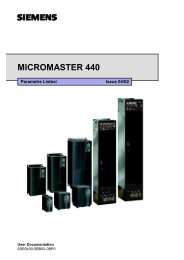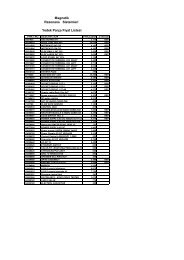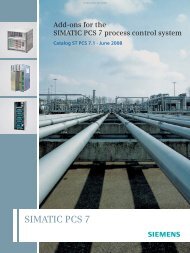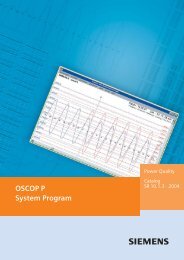SIPROTEC 4 7SJ63 Multifunction Protection Relay - Siemens
SIPROTEC 4 7SJ63 Multifunction Protection Relay - Siemens
SIPROTEC 4 7SJ63 Multifunction Protection Relay - Siemens
Create successful ePaper yourself
Turn your PDF publications into a flip-book with our unique Google optimized e-Paper software.
5 Overcurrent <strong>Protection</strong> / <strong>7SJ63</strong>Typical applicationsOverview of connection types5Type of network Function Current connection Voltage connection(Low-resistance) earthed network Time-overcurrent protectionphase/earth non-directionalResidual circuit, with 3 phase-currenttransformers required, phase-balanceneutral current transformer possible-(Low-resistance) earthed networks Sensitive earth-fault protection Phase-balance neutral currenttransformers requiredIsolated or compensated networks(Low-resistance) earthed networksIsolated or compensated networks(Low-resistance) earthed networksIsolated networksCompensated networksTime-overcurrent protectionphases non-directionalTime-overcurrent protectionphases directionalTime-overcurrent protectionphases directionalTime-overcurrent protectionearth directionalSensitive earth-faultprotectionSensitive earth-fault protectioncos ϕ measurementResidual circuit, with 3 or 2 phasecurrent transformers possibleResidual circuit, with 3 phase-currenttransformers possibleResidual circuit, with 3 or 2 phasecurrenttransformers possibleResidual circuit, with 3 phase-currenttransformers required, phase-balanceneutral current transformers possibleResidual circuit, if earth current>0.05I N on secondary side, otherwisephase-balance neutral currenttransformers requiredPhase-balance neutral currenttransformers required--Phase-to-earth connection orphase-to-phase connectionPhase-to-earth connection orphase-to-phase connectionPhase-to-earth connection required3 times phase-to-earth connection orphase-to-earth connection with opendelta windingPhase-to-earth connection with opendelta winding requiredn Connection of circuit-breakerUndervoltage releasesUndervoltage releases are used for automatictripping of high-voltage motors.Example:DC supply voltage of control system fails andmanual electric tripping is no longer possible.Automatic tripping takes place when voltageacross the coil drops below the trip limit. InFig. 5/133, tripping occurs due to failure ofDC supply voltage, by automatic opening ofthe live status contact upon failure of theprotection unit or by short-circuiting the tripcoil in event of a network fault.Fig. 5/133 Undervoltage release with make contact ( 50, 51)5/132<strong>Siemens</strong> SIP · 2006





